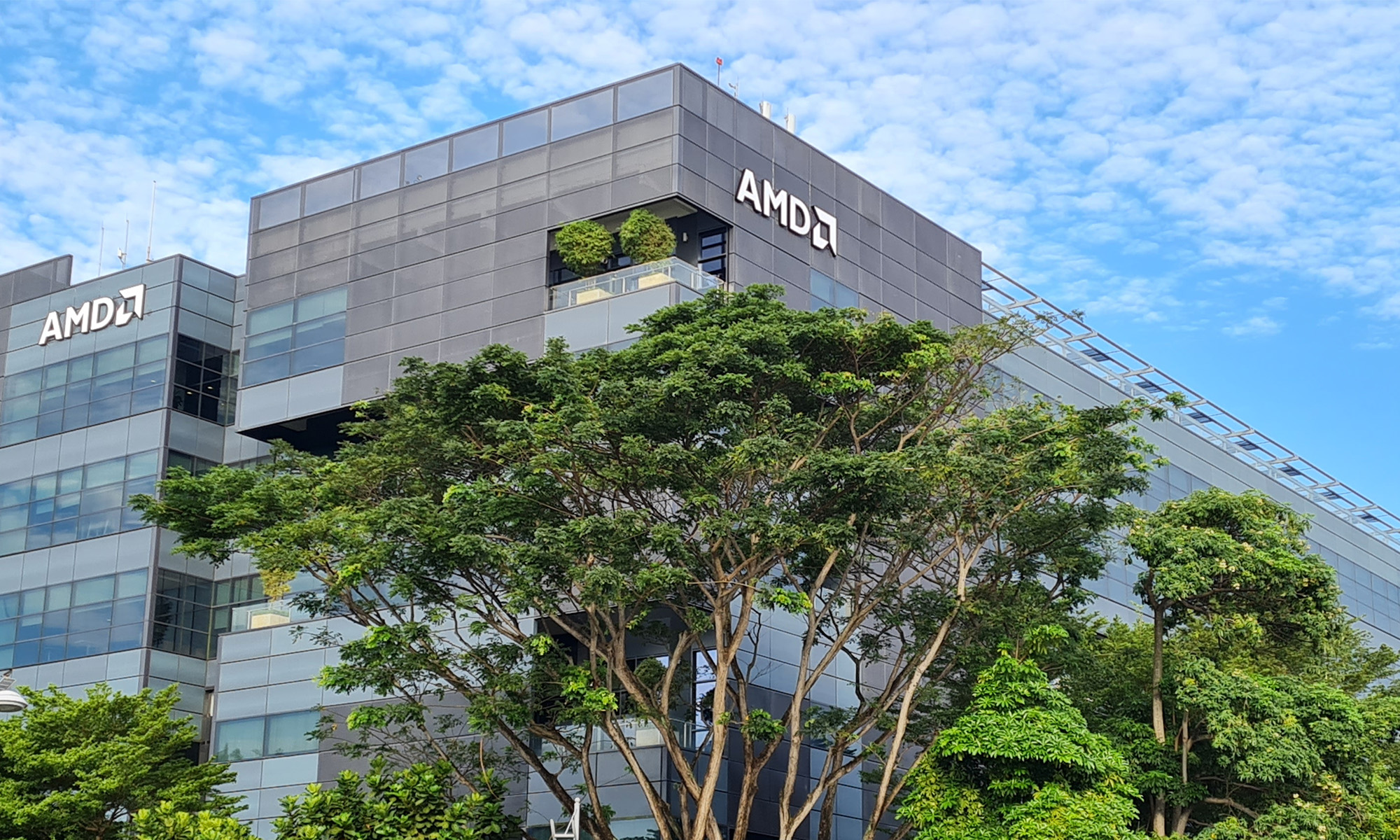It used to be said that Intel (INTC 0.52%) only let Advanced Micro Devices (AMD +0.07%) survive so to avert antitrust concerns. In fact, AMD almost folded in 2017, which would have eliminated the company for good. However, the company has turned around since then and may have taken the title from Intel as a top chip supplier.
But even if AMD has taken the lead, is it a great buy right now?
AMD may be leading, but chips are in trouble
The chip industry has been notoriously cyclical since its inception. As customer demand rises and falls, it heavily affects the chipmakers. Because of that, you must be careful of valuation metrics because they can be misleading. Often, the companies are at their cheapest at the end of the cycle because investors anticipate falling earnings. They also can look expensive at the beginning of cycles for the exact opposite reason.
Just look at a 30-year price-to-earnings chart of AMD:
AMD PE Ratio data by YCharts
So although 93 times earnings is expensive, it doesn't paint a complete picture.
Let's compare AMD to Intel and see how each is faring in the latest chip cycle.
In the fourth quarter of 2022, Intel's revenue fell 28%, but AMD's rose 16%. That's a pretty stark difference, but it gets even more interesting when you dig into some of their biggest segments.
| Segment | AMD | Intel |
|---|---|---|
| Client computing | (51%) | (36%) |
| Data center | 42% | (33%) |
Data sources: AMD and Intel.
Both companies have additional segments, but the client computing and data center businesses offer vital insights into the current state of the chip industry. Client computing is the revenue each company generates from their devices that make it into computers and laptops. The big decline for each company's segment speaks to the demand evaporation for personal computers.
However, data center demand is still strong, as evidenced by the major cloud providers' rapidly growing revenue. Despite that, Intel's revenue shrank while AMD's boomed. This should clue in investors on AMD's technology versus Intel's, as AMD seems to be winning this battle.
There is, however, a bit of a nuance hidden within AMD's revenue growth: its Xilinx acquisition. Last year, the segment only generated $246 million. In 2022, it produced $4.55 billion -- a 1,750% rise. If you subtract this number to understand how AMD's revenue truly fared in Q4, you'd get a revenue decline of 12% -- still less than Intel.
So although AMD may be a better investment than Intel, is it a good buy?
AMD's margins are getting compressed
Within AMD's results was a declining gross margin. This indicates AMD had to lower prices to sell goods -- not a good sign for a company. Furthermore, operating expenses rose a whopping 109%, but the Xilinx acquisition contributed to that rise. Using non-GAAP (adjusted) metrics are helpful in this case, and AMD's non-GAAP operating income was $1.3 billion in Q4, the same as last year.

NASDAQ: AMD
Key Data Points
But unchanged profit with rising revenue indicates problems, and the chip cycle may have turned against AMD. Wall Street analysts expect revenue to be little changed in 2023, and AMD's forecast for the first quarter is for a 10% revenue decline. However, in 2024 those analysts expect AMD's revenue to grow by 17%.
So should you buy AMD now? I think investors can take a position in AMD if they understand the company may take a year or two to show better results. AMD is executing at a high level, but macroeconomic trends can overpower even the best companies.
If you're patient, AMD could be a good buy now. However, more companies are returning to growth mode that could outshine AMD over the next year, and they might make better investments.







